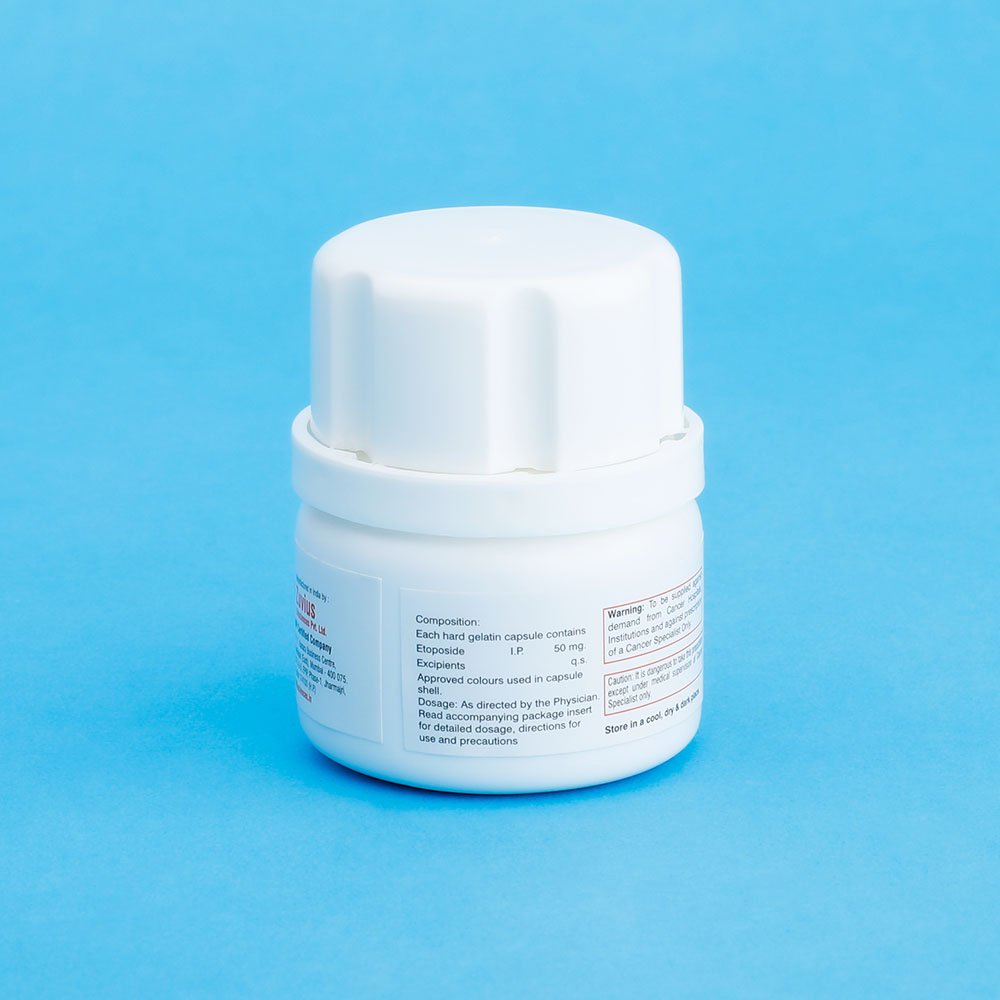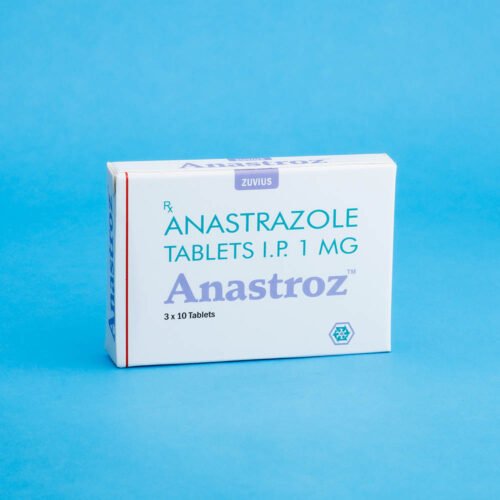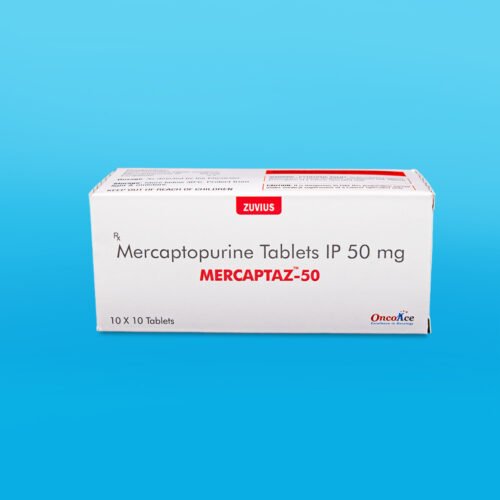Zuvitop Cap- Etoposide Cap 50 mg
Etoposide Cap
Strength: 50mg
Pack Size: 1 x 8
Drug Class: Cytostatics
Dosage and Administration:
Etoposide Capsules
In small cell lung cancer, the recommended dose of Zuvitop-50 capsules is two times the IV dose rounded to the nearest 50 mg. For one courses of therapy, the normal adult dose in 175-200mg of Zuvitop-50 daily for 5 consecutive days orally, followed by a recession (withdrawal) interval of 3 weeks. Therapy can be repeated if necessary. The dose can be increased or reduced.
The dosage by either route, should be modified to take into account the myelosuppressive effects of other drugs in the combination or the effects of prior radiation therapy or chemotherapy.
For recommended dosing adjustments in patients with renal impairment see PRECAUTIONS section.
Chemotherapy courses are repeated at 3- to 4-week intervals after adequate recovery from any toxicity.
(etoposide) Capsules
In small cell lung cancer, the recommended dose of (etoposide) Capsules is two times the IV dose rounded to the nearest 50 mg (i.e., two times 35 mg/m2/day for 4 days to 50 mg/m2/day for 5 days).
The dosage should be modified to take into account the myelosuppressive effects of other drugs in the combination or the effects of prior x-ray therapy or chemotherapy which may have compromised bone marrow reserve.
Administration Precautions
To minimize the risk of dermal exposure, always wear impervious gloves when handling blisterpacks of individually labeled blisters containing (etoposide) capsules. This includes all handling activities in clinical settings, pharmacies, storerooms, and home healthcare settings, including during unpacking and inspection, transport within a facility, and dose preparation and administration.
Stability
(etoposide) Capsules must be stored under refrigeration 2° – 8° C (36° – 46° F). The capsules are stable for 24 months under such refrigeration conditions.
Cold Storage: no
Etoposide (also commonly known as VP-16) is a semisynthetic derivative of podophyllotoxin used in the treatment of certain neoplastic diseases. It is 4′-demethylepipodophyllotoxin 9-[4,6-O-(R)-ethylidene-β-D-glucopyranoside]. It is very soluble in methanol and chloroform, slightly soluble in ethanol, and sparingly soluble in water and ether. It is made more miscible with water by means of organic solvents. It has a molecular weight of 588.56 and a molecular formula of C29H32O13.
(etoposide) is administered orally. (etoposide) is available as 50 mg pink capsules. Each liquid-filled, soft gelatin capsule contains 50 mg of etoposide in a vehicle consisting of citric acid, glycerin, purified water, and polyethylene glycol 400. The soft gelatin capsules contain gelatin, glycerin, sorbitol, purified water, and parabens (ethyl and propyl) with the following dye system: iron oxide (red) and titanium dioxide; the capsules are printed with edible ink.
The structural formula is:
 |
Etoposide is a specific antitumor drug that clinical and basic research has demonstrated to be effective in treating SCLC, malignant lymphoma, and ovarian cancer. Zuvitop has been shown to cause metaphase arrest in chick fibroblasts. Its main effect, however, appears to be at the G2 portion of the cell cycle in mammalian cells. Two different dose-dependent responses are seen. At high concentrations (10 µg/mL or more), lysis of cells entering mitosis is observed. At low concentrations (0.3-10 µg/mL), cells are inhibited from entering prophase. It does not interfere with microtubular assembly. The predominant macromolecular effect of etoposide appears to be the induction of DNA strand breaks by an interaction with DNA topoisomerase II or the formation of free radicals.
Read the label carefully before use
keep out the reach of children
General
In all instances where the use of VePesid (etoposide) is considered for chemotherapy, the physician must evaluate the need and usefulness of the drug against the risk of adverse reactions. Most such adverse reactions are reversible if detected early. If severe reactions occur, the drug should be reduced in dosage or discontinued and appropriate corrective measures should be taken according to the clinical judgment of the physician. Reinstitution of VePesid (etoposide) therapy should be carried out with caution, and with adequate consideration of the further need for the drug and alertness as to possible recurrence of toxicity.
Patients with low serum albumin may be at an increased risk for etoposide associated toxicities.
Carcinogenesis, Mutagenesis, Impairment of Fertility
Etoposide has been shown to be mutagenic in Ames assay.
Treatment of Swiss-Albino mice with 1.5 mg/kg I.P. of VePesid (etoposide) on day 7 of gestation increased the incidence of intrauterine death and fetal malformations as well as significantly decreased the average fetal body weight. Maternal weight gain was not affected.
Irreversible testicular atrophy was present in rats treated with etoposide intravenously for 30 days at 0.5 mg/kg/day (about 1/16th of the human dose on a mg/m2 basis).











